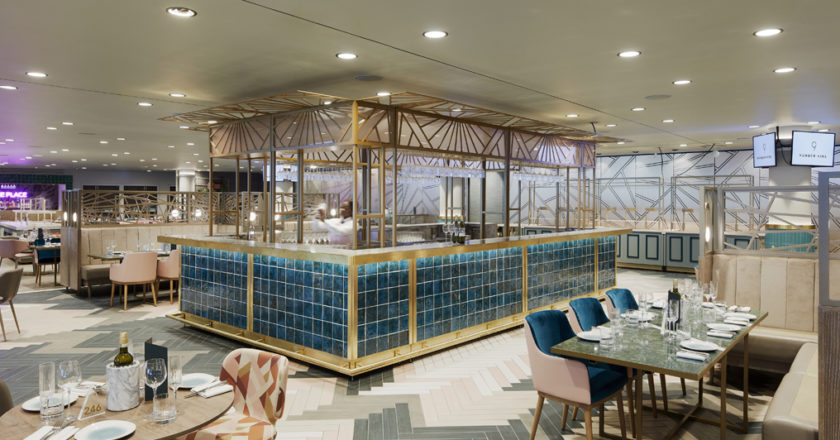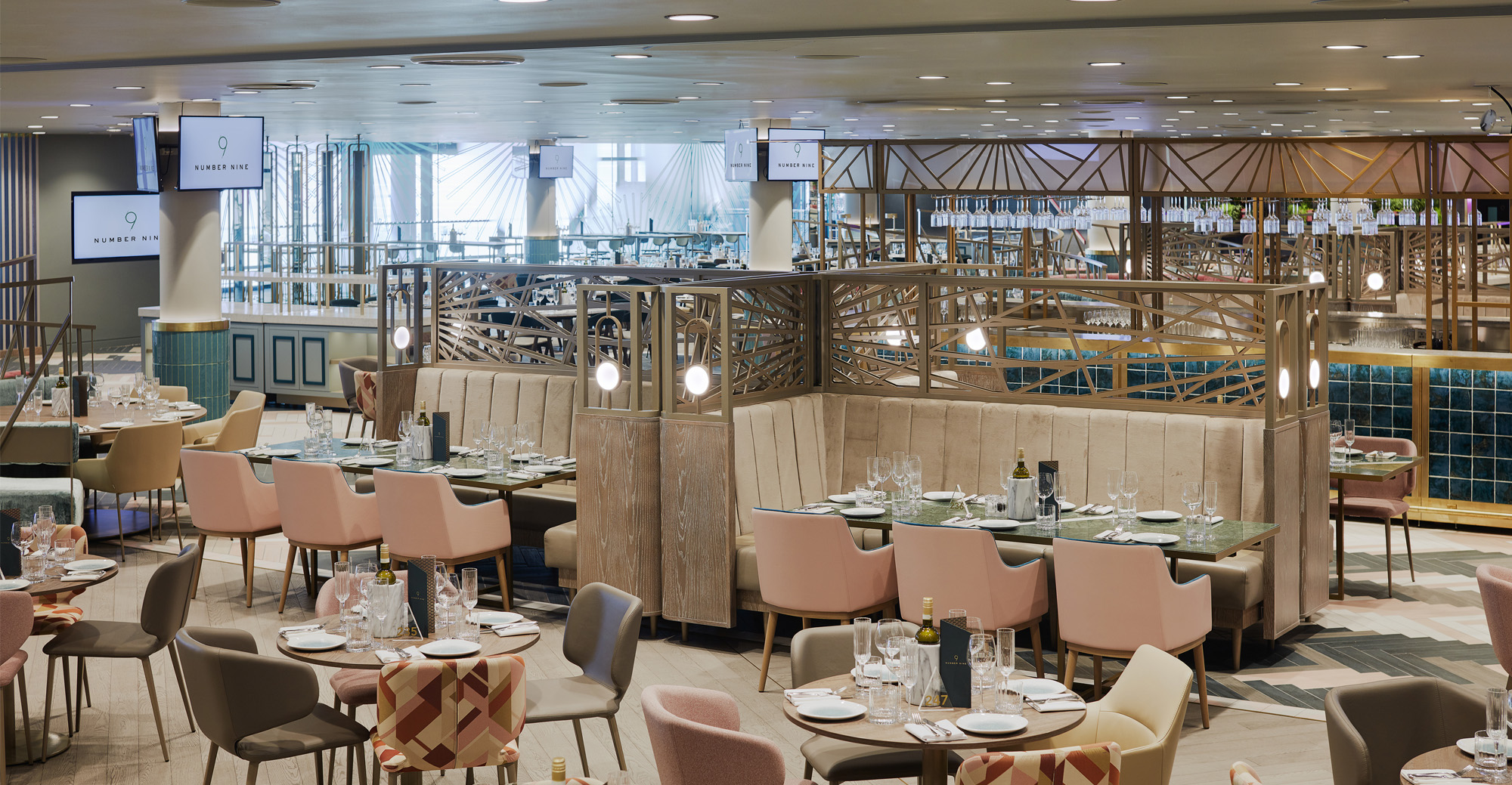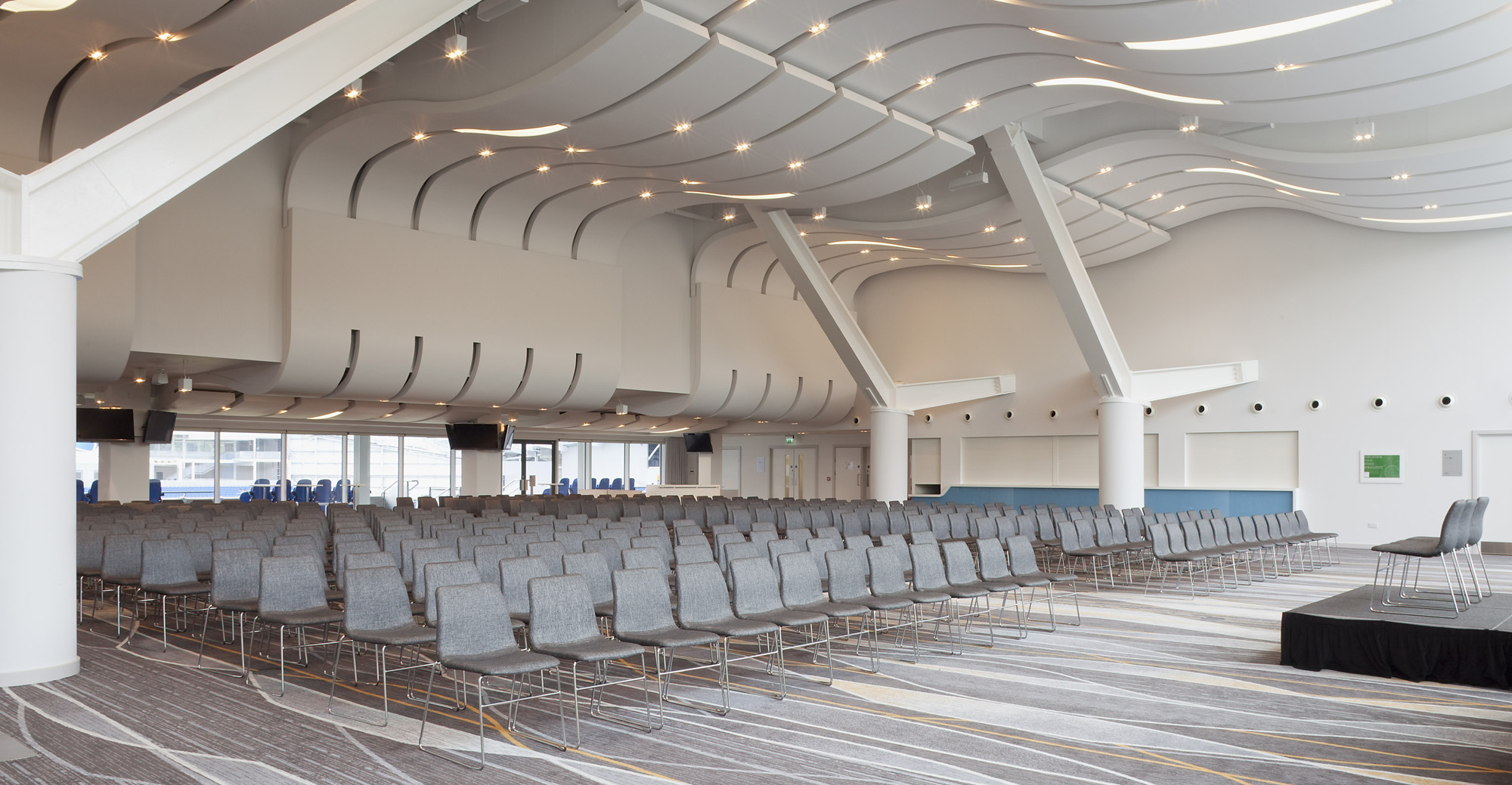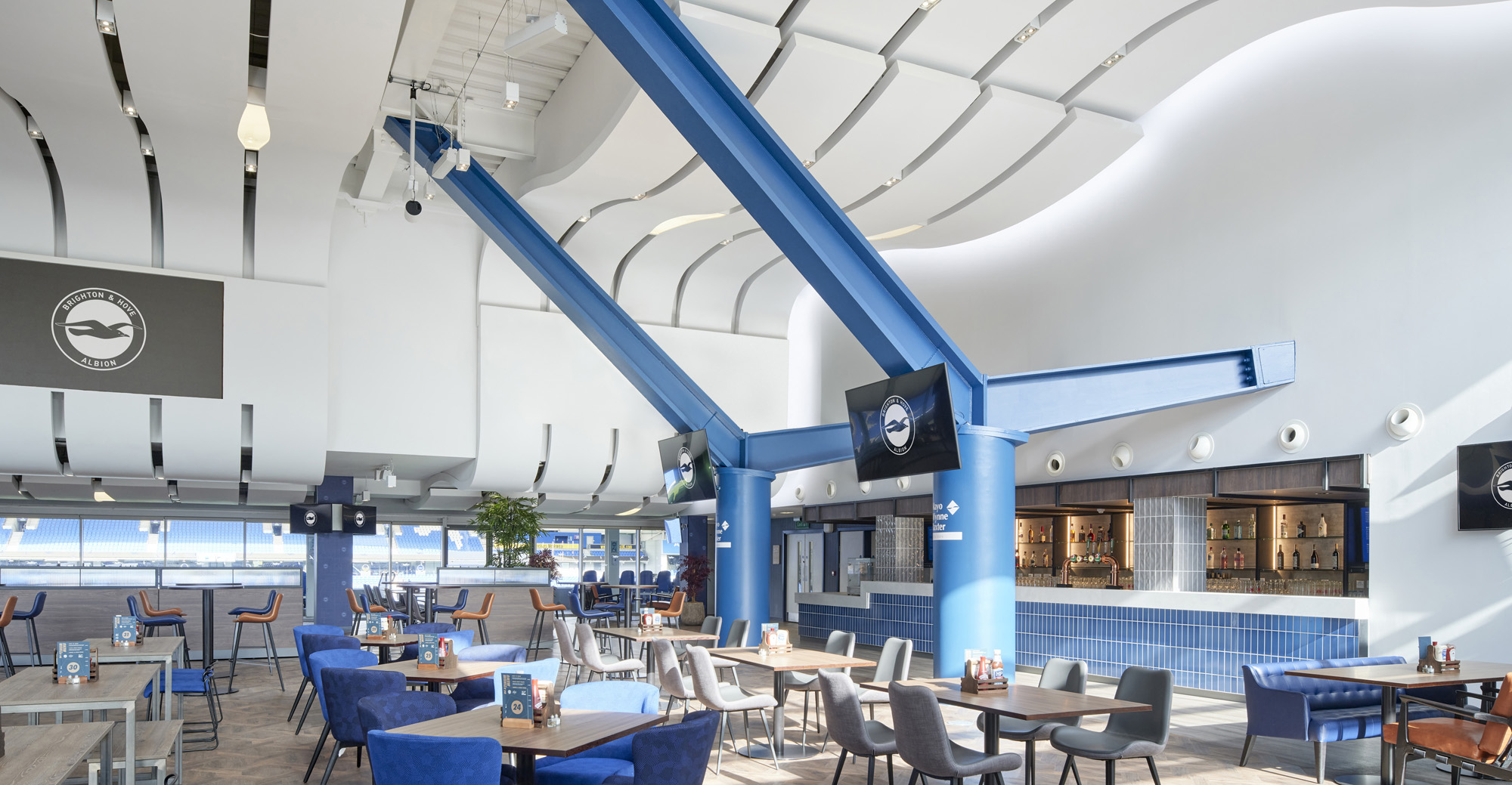THE EVENT INDUSTRY 2022 – Flexibility and Adaptability
22 February 2022
In the third viewpoint looking into the future of venues, KSS Associate Director Debbie Power considers the impacts, benefits and demands for flexibility.
The hospitality industry has had to flex and adapt in ways unimaginable over the last two years. From the everchanging strategic event and contingency planning to the way the environments themselves have been used to reimagine the spaces.
As experienced hospitality designers, we had been creating authentic but flexible environments prior to the pandemic and it was rewarding to hear positive feedback that our environments had proved their worth and operated successfully during the pandemic.
Number Nine at Wembley National Stadium is an example of such flexibility. The central island bar is made of eight individually mobile sections that can be disconnected from their floor boxes and the gantries can be telescopically retracted to the level of the counters. The decorative pelmets even hinge back for secure movement within the lounge or complete relocation anywhere in the building as it was carefully designed to fit in all catering lifts. The banquette seating has integrated lighting so that it can also be disconnected, split down into smaller modules, and moved to suit any new layout. Decoratively panelled moveable walls also divide the lounge into multiple spaces for other uses and events.
At the time of designing the lounge in 2018, this was a key requirement for Wembley, for events such as concerts, but this level of flexibility has been crucial for their response to Covid. It has not only allowed flexibility and enabled different layouts, but the physical design and flexibility of the bars and seating have enabled Club Wembley to offer a great experience to a limited number of guests without losing the atmosphere and ambience.
Understandably there has been a huge drive to reopen venues, bring back guests and earn revenue post-Covid. But there are more sustainable grounds for this drive too. No one in the industry wants to ever see these venues empty again, on event day or any day moving forward. These often vast spaces need to be better utilised.
In the future stadia, for example, need to define their role as central to the community, offering a space and structure that can be a real support and integral hub and centre to the local marketplace. This was a key element of the stadium and hospitality brief when we design the Amex stadium for Brighton & Hove Albion over a decade ago. They wanted to create not only a long-awaited home for the Club and their fans but also a destination and a facility for the City. As Martin Perry, then Chief Executive said at the time, “this will be a genuine community stadium, and first and foremost, a real and spiritual home.”
Initially, to appeal to all in the city, the Client team requested that the spaces were neutralised from the Club, so we took references from the Club’s vibrant and seaside location for our designs, however soon after opening, we were asked to revisit the designs to incorporate more club references, whilst the stadium was proving extremely popular, they realised that they need not have been shy, the stadium’s appeal was because of the passion the community has for this unconventional and successful football club.









